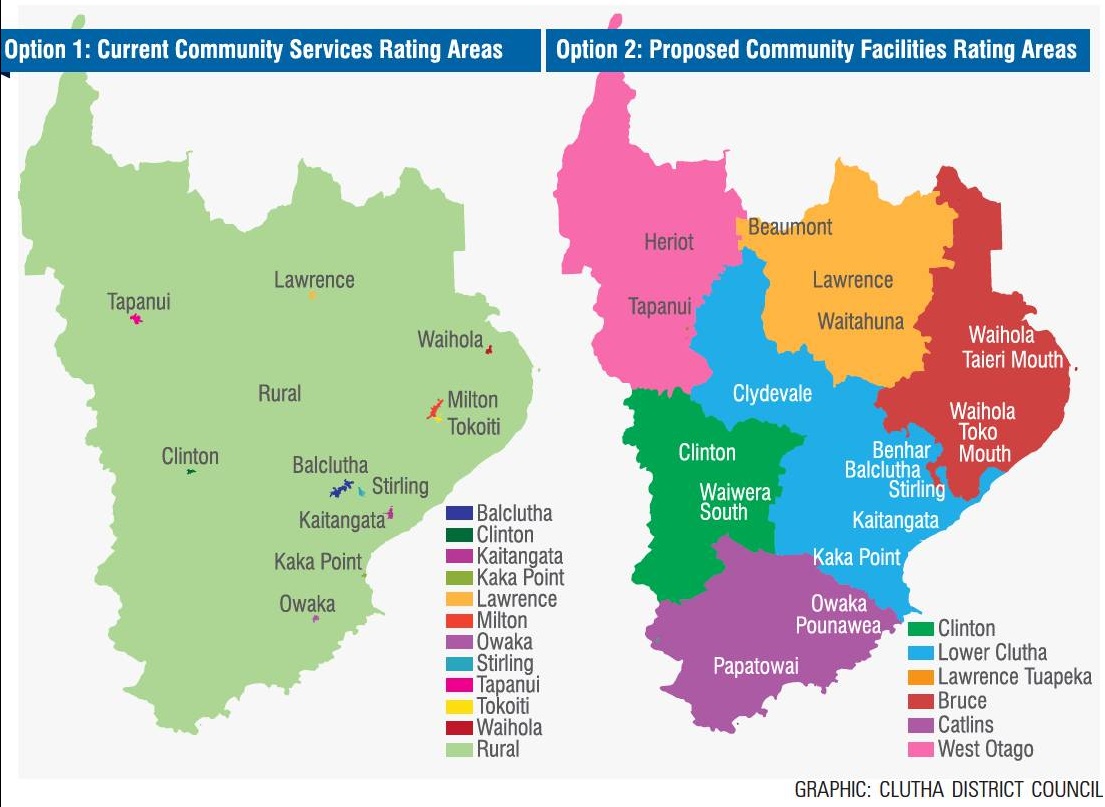
A new proposal affecting how people pay for community facilities could have a significant effect on Clutha rates levels over coming years.
Clutha District Council has released its latest long-term plan consultation document and is seeking public feedback on its proposals before submissions close on May 11.
Among five key points highlighted for consideration is a proposal to establish six new geographical ``communities of interest'' throughout the district for the purposes of assessing community facilities rates.

Under the current system, Clutha's 11 urban centres are individually rated according to their local facilities, such as pools, halls, parks, reserves and sportsgrounds, and all other properties are designated ``rural'' and pay a uniform rate based on their property value.
Clutha Mayor Bryan Cadogan said he believed the new system, where multiple communities sharing common facilities would also share related costs, would provide a more equitable way of allocating those costs throughout the district.
``The underlying principle is `everybody goes somewhere'. In other words, even if you're living rurally, you'll visit your nearest local centre to access these sorts of facilities. At the moment, many rural ratepayers pay next to nothing for community services; this would address that imbalance and spread the load more fairly.''
Some communities and ratepayer categories would see immediate benefit from the proposed scheme and others would pay more, Mr Cadogan said.
Sample properties in the consultation document showed most urban communities benefiting under the proposal, with reductions of between two percentage points (Clinton, Milton) and nine percentage points (Stirling) in community facilities rates as a proportion of their total rates bill, equating to savings of $49 to $291 for 2018-19.
Kaitangata, Waihola, Lawrence and Tapanui would see either modest rises of up to 2 percentage points ($57,
Waihola) or no change.
Commercial and ``industrial urban'' ratepayers would see the greatest benefit, with drops of 29 ($3040) and 30 ($2409) percentage points respectively.
This was simple ``common sense'', Mr Cadogan said, as businesses were not users of community facilities as defined.
Those located outside town boundaries would see the biggest increases. Farmers and lifestylers would pick up hikes of between two and 16 percentage points, ranging from $184 to $286.
The public would have a chance to voice their opinions on this and other proposals in the long-term plan face to face with Mr Cadogan and councillors at district-wide ``soapbox sessions'' from Saturday, he said.
These would be held in Clinton, Tapanui and Lawrence on April 21; Kaka Point and Owaka on April 22; Balclutha, Stirling and Kaitangata on April 28; and Milton, Taieri Mouth and Waihola on April 29.
Waihola residents could also submit on the recently released Our Place Waihola community plan during the consultation period, until May 11.
``I cannot stress enough the significance of these issues for ratepayers and the direction of our district, so please do share your views,'' Mr Cadogan said.












